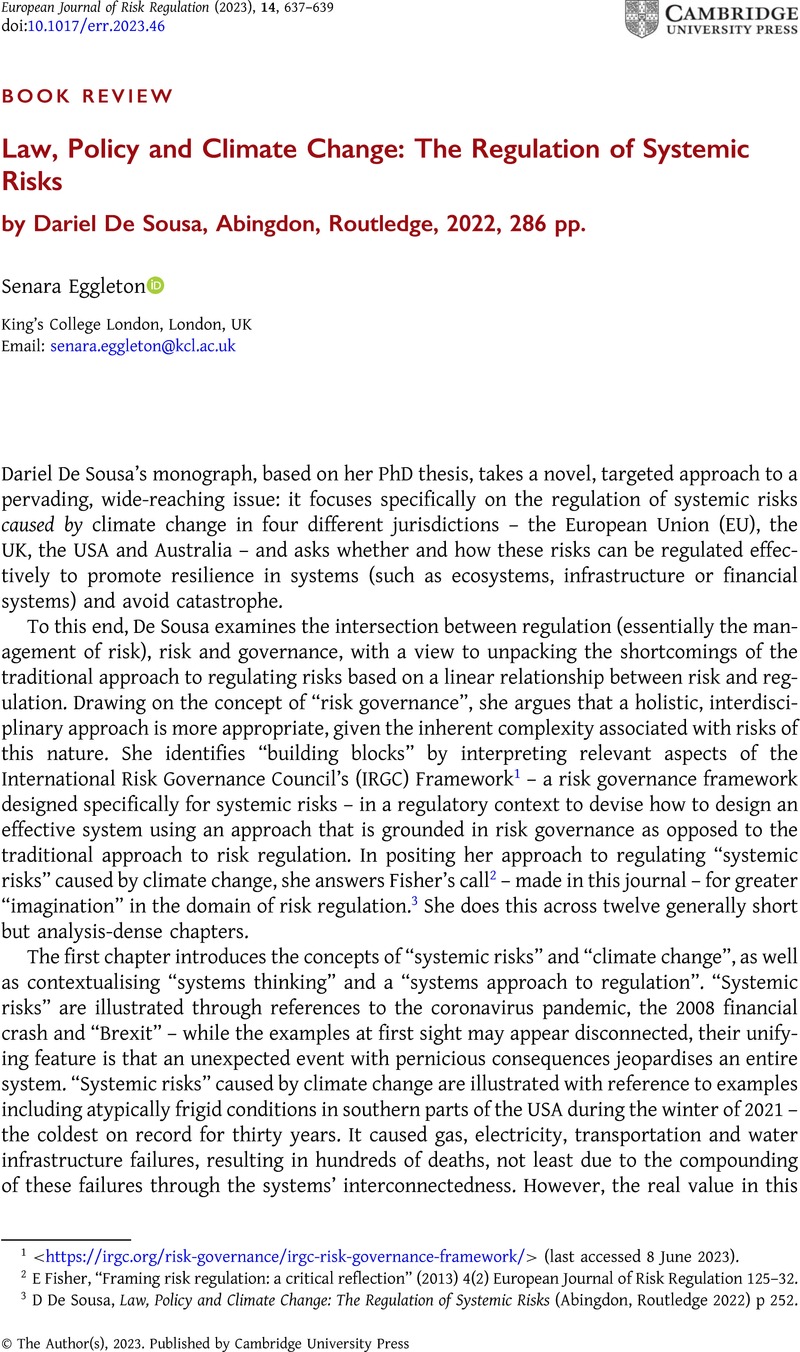No CrossRef data available.
Published online by Cambridge University Press: 26 June 2023

1 <https://irgc.org/risk-governance/irgc-risk-governance-framework/> (last accessed 8 June 2023).
2 E Fisher, “Framing risk regulation: a critical reflection” (2013) 4(2) European Journal of Risk Regulation 125–32.
3 D De Sousa, Law, Policy and Climate Change: The Regulation of Systemic Risks (Abingdon, Routledge 2022) p 252.
4 ibid, 92: “The concept of a ‘building block’ model was coined by the Australian Competition and Consumer Commission when determining the total revenue requirement for a regulated gas pipeline: J. Dimasi, ‘Rethinking utility regulation in Australia’, Monash Business Policy Forum (Monash Business School, 2015) p. 13 accessible at: https://www.monash.edu/__data/assets/pdf_file/0005/906971/rethinking-utility-regulation-in-australia-final.pdf.”
5 ibid, 91.
6 ibid, 91.
7 ibid, 92: “R. Falkner, H. Stephan, & J. Vogler, ‘International climate policy after Copenhagen: Towards a “building blocks” approach’ (2010) 1(3) Global Policy, pp. 252–62; R.B. Stewart, M. Oppenheimer, & B. Rudyk, ‘Building blocks for global climate protection’ (2013) 32(2) Stanford Environmental Law Journal; E. Waters, ‘Why the world should act like children: Using the building blocks method to combat climate change, beginning with methane’ (2017) 51(4) University of Richmond Law Review, pp. S27–42.”
8 ibid, 92.
9 ibid, 225.
10 National Health Service Act 2006.